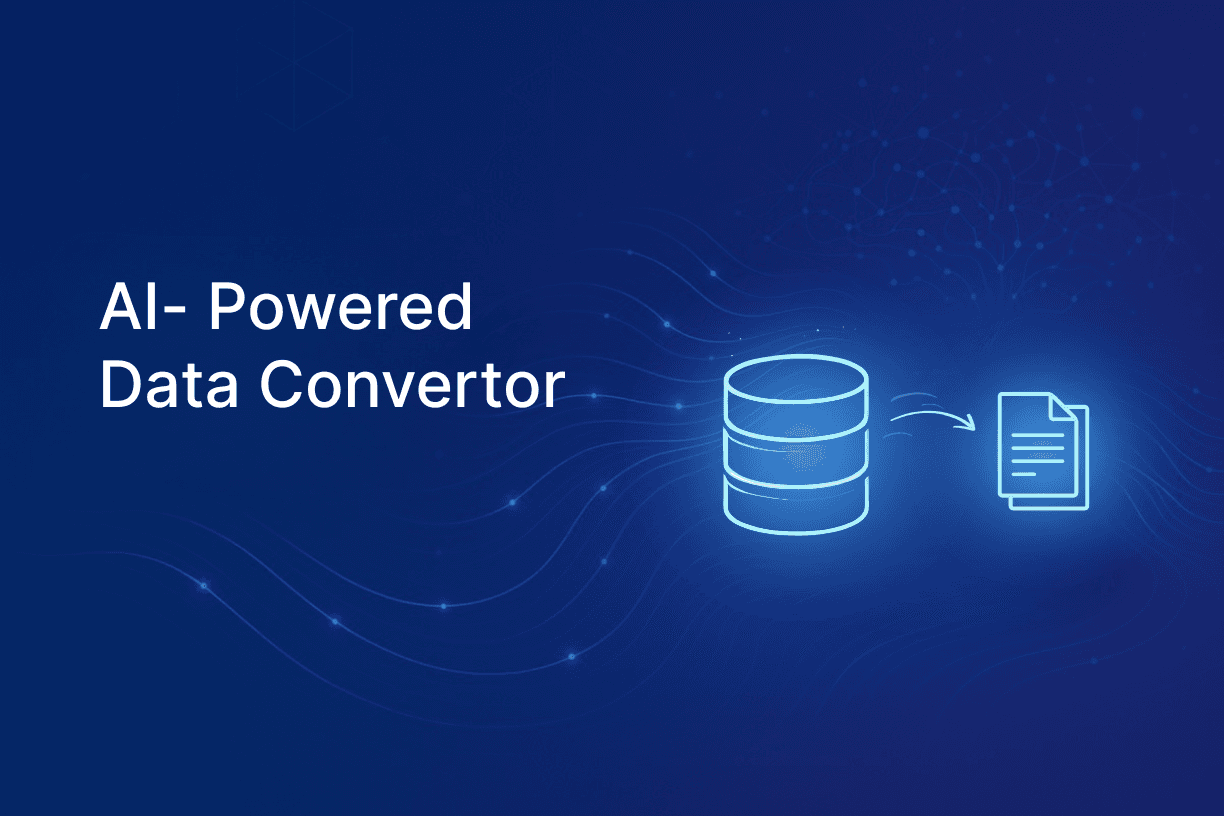AI-Powered SQL-to-PySpark Code Converter
Automatically transform complex SQL stored procedures into optimized PySpark code and validate the conversion instantly. Run your original SQL procedure, generate equivalent PySpark, execute both, and compare outputs to ensure accuracy. Modernize legacy SQL workflows into scalable big-data pipelines in minutes, not months.

Key Features
Transforming complex database structures into accessible knowledge
Automated SQL-to-PySpark Conversion
Instantly convert complex SQL stored procedures into clean, production-ready PySpark code with full logic preservation.
Dual Execution & Validation Engine
Run both the original SQL procedure and the generated PySpark code, then automatically compare outputs to ensure accuracy and consistency.
End-to-End Code Modernization
Transform legacy database logic into distributed big-data processing pipelines suitable for Spark clusters and cloud environments.
Intelligent Query Parsing
Deep semantic understanding of SQL logic, joins, CTEs, aggregations, and conditional flows for precise conversion.
Error Detection & Debug Guidance
Identify inconsistencies, unsupported operations, or structural mismatches and provide actionable fixes.
Performance-Optimized PySpark Output
Generate efficient PySpark code following best practices—minimized shuffles, optimized joins, and parallelized transformations.
Multi-Database Compatibility
Supports SQL Server, MySQL, PostgreSQL, Oracle, BigQuery, Redshift, Snowflake, and more.
API-Ready Workflow Integration
Expose conversion and validation capabilities through a simple API usable by CI/CD pipelines, developers, or automated migration systems.
Benefits
Why our AI-Powered SQL-to-PySpark Code Converter transforms your modernization workflow
Accelerate Modernization Efforts
Migrate legacy SQL logic to scalable PySpark pipelines in minutes instead of months of manual rewriting.
Ensure Conversion Accuracy
Dual execution and output comparison eliminate guesswork, ensuring the PySpark version behaves exactly like the original stored procedure.
Reduce Engineering Workload
Save developers countless hours by automating repetitive translation and validation tasks.
Future-Proof Your Data Stack
Move from monolithic databases to distributed compute systems ready for cloud-scale analytics.
Use Cases
How users actually use this SQL-to-PySpark Conversion & Validation Tool.
Converting SQL Stored Procedures Into PySpark for Code Migration
Users take an existing SQL stored procedure and quickly generate a clean PySpark version instead of rewriting everything manually.
Verifying That PySpark Logic Matches the Original SQL Logic
Users run the SQL procedure → save its CSV output → run the converted PySpark code → save CSV output → compare both to ensure the logic is identical.
Speeding Up Manual Code Rewrites
Instead of developers reading long stored procedures and rewriting them line-by-line in PySpark, the tool generates a ready-made starting point.